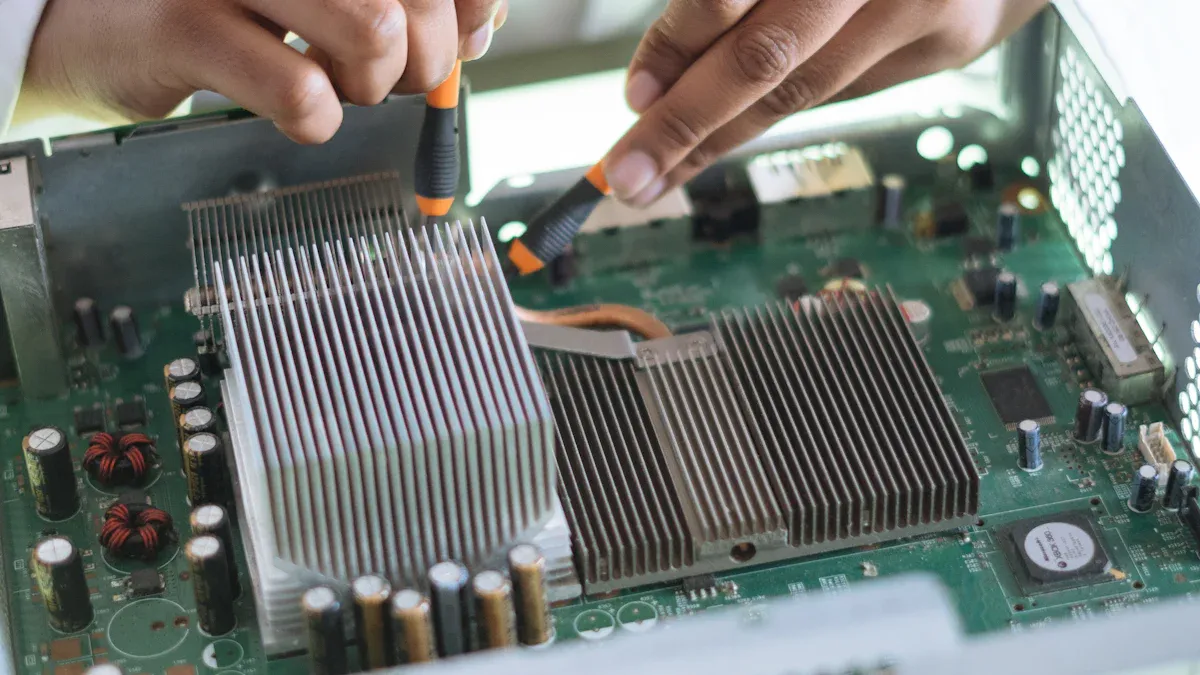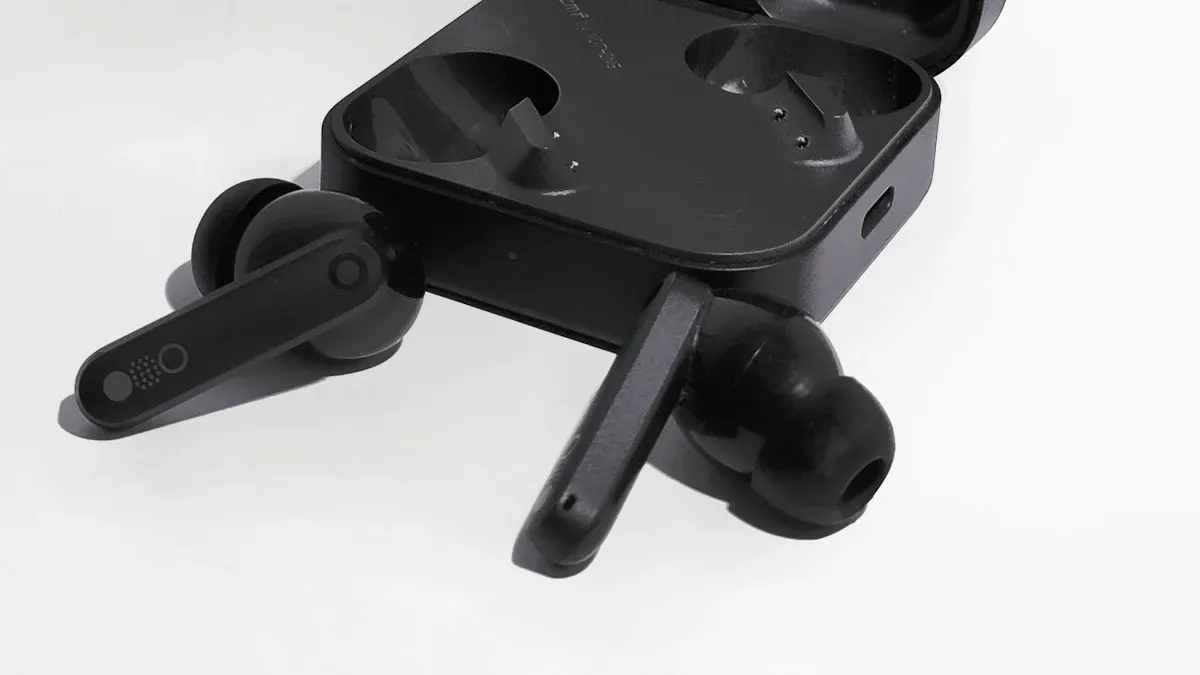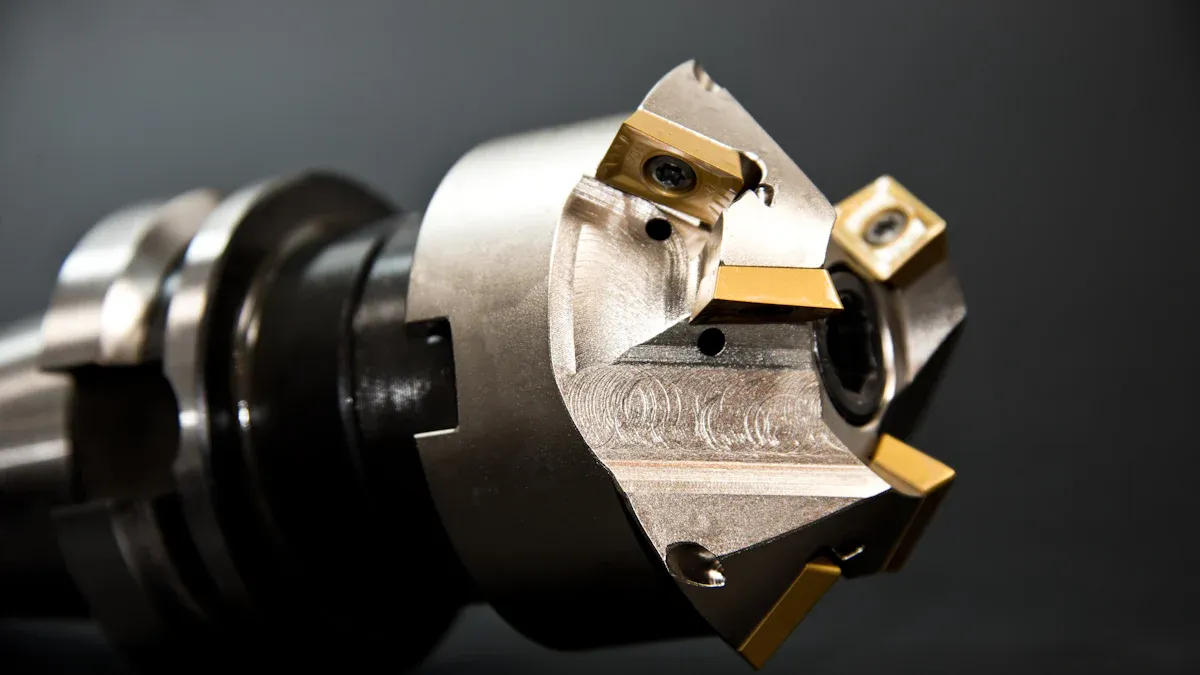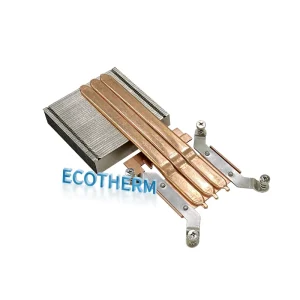Are heat sinks universal?

No, heat sinks are not universal. Each heat sink is designed to match a specific device or socket. As modern CPU sockets and heat sink mounting systems evolve, heat sink designs must also adapt to fit these changes, especially as pin layouts and cooling requirements become more complex. If you have a unique device or special cooling needs, you may require a custom heat sink to achieve optimal performance.
Key Takeaways
- Heat sinks are not all the same. Each one fits certain devices and cooling needs.
- Picking a heat sink means you look at size. You also check how it mounts. You must think about how much heat it needs to handle.
- Materials like aluminum and copper change how heat moves. They also change the price. Pick the material that works for your device.
- Some devices need custom heat sinks. This is true if they have special cooling needs.
- Always make sure the heat sink matches your device’s model. Check the socket type too. This helps stop overheating problems.
Why Not Universal
Heat sinks do not work with every device. Most heat sinks are made for certain uses. Many things stop one heat sink from fitting all devices. Here are the main reasons.
Device-Specific Design
Each electronic device needs its own cooling. Some devices get hotter than others. You need a heat sink that matches your device’s cooling needs. For example, a gaming computer needs a different heat sink than a router.
Note: Devices with more power need bigger or better heat sinks.
Here is a table that shows why heat sinks are not universal:
| Design Factor | Explanation |
|---|---|
| Thermal Management Needs | Different devices need different ways to get rid of heat. |
| Mounting Methods | Heat sinks attach in different ways, so not all fit. |
| Material Properties | Materials work differently for heat and performance. |
The material of a heat sink is important. Aluminum and copper are used a lot. Each material has good points:
| Material | Conductivity | Cost | Corrosion Resistance |
|---|---|---|---|
| Aluminum | High | Low | Moderate |
| Copper | Very High | High | High |
Thermal resistance is a big part of how a heat sink works. Lower thermal resistance means heat moves out faster. If your device needs special cooling, you might need a custom heat sink.
- Thermal resistance changes how fast heat leaves your device.
- Good heat transfer keeps electronics safe and working.
- Lower thermal resistance helps your device work better.
Socket Types
How a heat sink attaches depends on the socket type. CPU sockets come in many shapes and sizes. Each socket uses its own way to mount a heat sink. Here are some common ways heat sinks attach:
- Wire Clips
- Push Pins
- Thermal Tapes
- Epoxy
- Plastic Clips
- Spring Loaded Screws
If you use the wrong heat sink for a socket, it will not fit right. It also will not cool well. You may need a custom heat sink for rare or new socket types.
Rules also change heat sink design. Devices must follow certain temperature, size, and safety rules. These rules make it hard for one heat sink to fit all devices.
| Requirement Type | Description |
|---|---|
| Thermal Specifications | Limits for temperature, power, and environment. |
| Physical Constraints | Size, weight, and space limits. |
| Regulatory Standards | Must follow safety and industry rules. |
Brand Differences
Brands often make heat sinks for their own products. Some brands, like ASUS and Supermicro, let you use heat sinks on more systems. Others, like Dell and HPE, make heat sinks for only their own models. This makes it hard to swap or upgrade parts.
- ASUS and Supermicro sometimes let you use the same heat sink on different systems.
- Dell and HPE make heat sinks for certain models only.
- Brand-specific designs make it hard to use heat sinks on other devices.
Here is a table showing how brands handle compatibility:
| Brand | Compatibility Features |
|---|---|
| Coolserver | Works with many systems and supports SP5/AMD+ CPUs. |
| ASUS | Some heat sinks work on more than one system. |
| Supermicro | Some heat sinks work on more than one system. |
| Dell | Not much cross-compatibility. |
| HPE | Not much cross-compatibility. |
If your device is from a brand with strict rules, you may need a custom heat sink.
Tip: Always check your device’s brand and model before buying a heat sink. This helps you avoid problems.
New technology also changes heat sink compatibility. New materials and smaller devices come out every year. Better cooling systems are made too. You may need a custom heat sink for new gadgets or special projects.
Heat Sink Compatibility

When picking a heat sink, you need to think about more than just the device. You should look at the size, how it mounts, the way it cools, and how much heat it needs to handle. These things help make sure your heat sink will work well.
Size and Mounting
The size of a heat sink is very important. Bigger heat sinks can move heat away faster because they have more surface area. But the heat sink must fit inside your device. If it is too big, it will not fit. If it is too small, it will not cool enough.
How you attach the heat sink matters too. You need the right amount of pressure when mounting. If there is not enough pressure, air can get in between the heat sink and the device. Air gaps stop heat from leaving the device. Too much pressure can break your device. Always check how the heat sink mounts before you buy it.
| Aspect | Impact on Compatibility |
|---|---|
| Size | Bigger heat sinks move heat better, but must fit the device. |
| Mounting Mechanism | The right pressure is needed; too little makes air gaps, too much can break parts. |
Active vs Passive
There are two main types of heat sinks. Active heat sinks use fans or moving parts to push heat away. Passive heat sinks use only metal fins and air that moves on its own.
| Feature | Active Heat Sinks | Passive Heat Sinks |
|---|---|---|
| Cooling Mechanism | Uses fans and moving parts to remove heat | Uses only metal and air to cool |
| Noise Level | Makes noise because of the fan | Very quiet, almost no noise |
| Space Requirements | Needs more space for the fan and parts | Smaller, good for tight spaces |
| Maintenance Needs | Needs cleaning because dust can build up | Needs less cleaning, fewer parts to break |
| Performance in High Loads | May not work well with very high heat | Not good for parts that get very hot |
If you have a small device or want it to be quiet, you might pick a passive heat sink. For gaming computers or servers, active heat sinks are better. Sometimes, you need a custom heat sink for special needs.
Thermal Needs
Every device has its own heat needs. You must match the heat sink to how much heat your device makes. Here are some important things to remember:
- The way heat moves from the chip to the air is very important.
- If your device makes a lot of heat, like a transistor at 2.78 W, you need a heat sink to keep it safe.
- You must check the highest thermal impedance to make sure your device stays cool.
Different parts make different amounts of heat. CPUs and GPUs usually need more cooling than other parts.
| Component | TDP Range (Watts) | Description |
|---|---|---|
| CPUs | Changes by model | The most heat made when working hard, set by the maker. |
| GPUs | 250W to 450W+ | The most heat made when used a lot, depends on speed. |
If your device needs special cooling, you might need a custom heat sink. Always check the details before you buy.
Custom Heat Sink Options

When to Consider Custom
Sometimes, you need a custom heat sink because standard options do not fit your needs. You should think about a custom solution in these situations:
- Your device has special thermal requirements that off-the-shelf heat sinks do not meet.
- The environment around your device is unique, such as high humidity, dust, or extreme temperatures.
- The shape or size of your device creates space constraints that standard heat sinks do not address.
Tip: If your device gets very hot or has a tight space, a custom heat sink can help keep it safe and working well.
How to Choose
Choosing the right custom heat sink takes careful planning. Start by understanding how much heat your device makes and the highest temperature it can safely reach. You need to know the thermal resistance, which shows how well the heat sink moves heat away. The formula for thermal resistance is Θ = ΔT / P, where ΔT is the temperature difference and P is the power your device uses.
Here are important steps and tips for picking a custom heat sink:
- Pick the right material. Aluminum is light and less expensive, while copper moves heat better but costs more.
- Measure the space in your device. Make sure the heat sink fits and touches the part that gets hot.
- Use a good thermal interface material (TIM) to help heat move from your device to the heat sink.
- Check airflow. More airflow means better cooling, especially for passive heat sinks.
- Test your design. Make a prototype and check if it keeps your device cool.
| Design Feature | Description |
|---|---|
| Airflow | Make sure enough air moves over the heat sink for good cooling. |
| Thermal Resistance | Lower values mean better heat transfer. |
| Materials | Choose based on cost, weight, and how well they move heat. |
| Attachment Methods | Use the best way to attach the heat sink for your device. |
| Prototype Development | Test your design before using it in your final product. |
Note: Avoid common mistakes like picking the wrong size, using poor materials, or blocking airflow. These errors can lead to overheating and device failure.
Heat sinks are not the same for every device. Each device needs a heat sink made just for it. Brands make their own heat sinks for their products. Dell and HPE only let you use their heat sinks on their models. The way you attach a heat sink and what it is made of also matters. You should always look at what your device needs before you buy a heat sink. Here is a table to help you pick the right one:
| Strategy | Considerations |
|---|---|
| Material Selection | Choose aluminum or copper for better heat movement. |
| Thermal Resistance Management | Use good pressure and smooth pads to help heat move out. |
| Attachment Methods | Pick the best way to attach, like clips or thermal tape. |
Try using thermal tests, change how far apart the fins are, and make sure the heat sink is not too heavy but still works well.
FAQ
What happens if you use the wrong heat sink?
If you use the wrong heat sink, your device may overheat. The heat sink might not fit or cool well. This can cause your device to slow down or even stop working.
How do you know if a heat sink fits your device?
Check your device’s model and socket type. Look at the size and mounting method. Read the product details or manual. If you match these, your heat sink should fit.
Do all CPUs use the same heat sink?
No, CPUs use different heat sinks. Each CPU has its own socket and cooling needs. You need to pick a heat sink made for your CPU’s socket and power level.
Can you reuse a heat sink from another device?
You can reuse a heat sink if it matches the size, socket, and mounting method of your new device. Always check for compatibility before you try to reuse it.
Why do some heat sinks have fans while others do not?
Some heat sinks use fans to move heat away faster. These are called active heat sinks. Others use only metal fins and air. These are passive heat sinks. The choice depends on how much heat your device makes.


